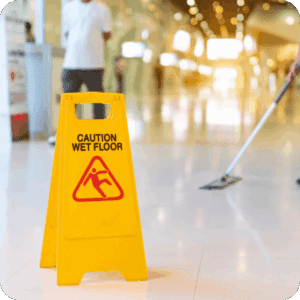 In the last few months, I wrote Part One and Two of a three-part series that outlines seven tips for B2B companies to increase the ROI on their marketing efforts, shorten the sales cycle and increase conversions.
In the last few months, I wrote Part One and Two of a three-part series that outlines seven tips for B2B companies to increase the ROI on their marketing efforts, shorten the sales cycle and increase conversions.
Part One of the series offered tips on how to use public relations, guest author opportunities and content marketing to promote your B2B company and Part Two covered another very important B2B marketing tactic: conferences and industry events. Today, in Part Three, we will be covering the final three tips on how B2B companies can improve their marketing efforts.
Whitepapers
A whitepaper is a more in-depth marketing piece that is designed to educate potential customers on how to solve a business problem that they may encounter. Ideally, the topic of the whitepaper should be related to your product offering or service capabilities, as the purpose of the whitepaper is to educate on the problem/issue, show the importance of solving the issue and then presenting the solution (your product/service). In most whitepapers, readers expect an in-depth review of the topic, which is supported by research and references.
Keep in mind that whitepapers cannot be a sales pitch, even when presenting your own product as a solution to the problem. Instead, you must provide more generalized information about solutions and should only reference your own product once, along with a link to your website where they can find out more. You can also provide more info about your company and product/service in an ‘About Us’ section at the very end of the whitepaper.
In general, whitepapers should be approximately 10 pages long and should include illustrations, charts, infographics, etc. The whitepaper should be designed by a graphic designer to match the style of your company’s branding and website. The writing should be clear, concise and professional. It is very important that the content is fact-checked and thoroughly reviewed to catch any grammar or spelling issues. Any errors can greatly diminish the credibility of your company and decrease the ROI of your whitepaper.
Our recommendation would be to release a whitepaper every quarter because it will create a continuous flow of new information and will keep your company in the forefront of potential customers’ minds.
Whitepapers can generate a great deal of PR exposure, both on the short and long-term, for a business, especially if they provide new, timely information or statistics that could be of use for media covering the hotel industry. Whitepapers also offer the chance to demonstrate the company’s expertise and generate new business leads.
Once completed, the whitepaper should be uploaded to your website and accessible from a special landing page. On this landing page, you should include a brief outline of the whitepaper topic and a call-to-action. In order to download the whitepaper, readers must provide their contact info (typically, name, telephone number, email address and company name), which helps to build your company’s marketing list. Make sure that you promote the whitepaper (and the landing page link) via all of your other marketing channels, including website homepage, email marketing, social media, PR outreach, etc.
Webinars
Webinars are another very effective tool for generating both PR opportunities and new business leads. Like a whitepaper, webinars are designed to educate listeners on a particular topic or issue and provide a solution if necessary. Also like whitepaper content, the webinar cannot be a sales pitch for your product or service or else you risk losing listeners’ interest and credibility.
When planning your webinar, there are five key elements to consider:
- Topic
- As well as your key executives, you will want to consider inviting one or two other guest speakers to provide a more well-rounded presentation on your chosen topic.
- Platform to use to create and present webinar.
- Marketing (how you’ll get people to sign up for your webinar). Like with a whitepaper, you should create a landing page on your website where people can register for the upcoming webinar, by providing their contact info (again, helping to grow your marketing list). Publicize the webinar in all of your marketing channels, including social media, PR outreach, email blasts, on your website’s homepage and with any potential customers that you contact prior to the event.
- Creation of content and visuals. Your webinar slides should include high-level points/stats that you can reference while you are speaking. Include graphics, charts, etc. to ensure that your slides are visually appealing, interesting and easy to understand.
Our recommendation would be to do at least one webinar per year, but if you have the resources, one webinar per quarter would yield even better results.
Industry surveys
Industry surveys are an effective way to collect industry information that will benefit your company in many ways, including introducing the company and its products/services to key decision makers and influencers, building a potential list leads and providing real industry data for ongoing PR efforts.
The goal with a survey is to discover information (especially stats) that would be timely and of interest to potential customers and media in the hotel industry. Keep the survey short and use a combination of multiple choice and long-form questions. A good guideline is to ask no more than 10 to 15 questions, as any more could make respondents less likely to want to complete the survey.
The difference between success and failure when doing an industry survey is how you market the survey because, in order to get accurate results, you need many respondents. You should send an email to your entire marketing list requesting that they complete the survey, as well as asking your social media followers to do the same. You may need to offer an incentive to get the respondents to answer the questions. Consider entering all respondents’ names into a draw for a desirable product (like an iPad) or a financial prize. Also, let anyone know who completes the survey that you will send the results via email once the data is compiled. That can be an added incentive to complete the survey.
Once the data analysis is complete, share the results with everyone who answered the survey, your marketing list and your entire trade media list. If your survey results are interesting and timely enough, you should be able to generate quite a bit of media exposure, both over the long and short term.
Our recommendation is to do one industry survey per year.
About the author
 Jennifer Nagy is the President of JLNPR, a full-service public relations and marketing agency that lives and breathes all facets of the travel technology industry. From online travel agencies to revenue management systems, tablet-based aviation automation solutions to IFE technology, hotels to airlines and everything in between, JLNPR uses our knowledge and experience to get your B2B travel technology company noticed by media, influencers and potential customers – and whenever possible, without the overused, often abused press release. Instead, JLNPR creates stories and trends around clients’ news, providing journalists with every resource they could need to write the story. It is a philosophy that has served our clients well, as we are consistently able to secure high-profile media coverage on their behalf.
Jennifer Nagy is the President of JLNPR, a full-service public relations and marketing agency that lives and breathes all facets of the travel technology industry. From online travel agencies to revenue management systems, tablet-based aviation automation solutions to IFE technology, hotels to airlines and everything in between, JLNPR uses our knowledge and experience to get your B2B travel technology company noticed by media, influencers and potential customers – and whenever possible, without the overused, often abused press release. Instead, JLNPR creates stories and trends around clients’ news, providing journalists with every resource they could need to write the story. It is a philosophy that has served our clients well, as we are consistently able to secure high-profile media coverage on their behalf.
If you have any questions about any of the seven B2B marketing strategies (from Part One, Two or Part Three) or to find out how JLNPR can help your company increase your visibility with the audiences that matter most, please contact me at jenn@jlnpr.com.















